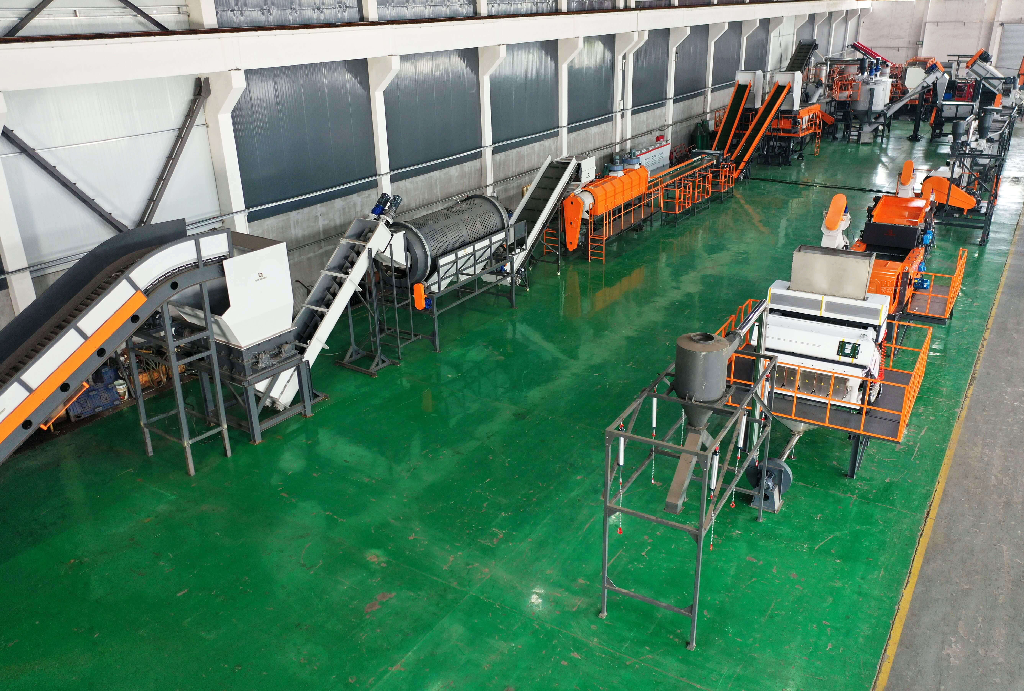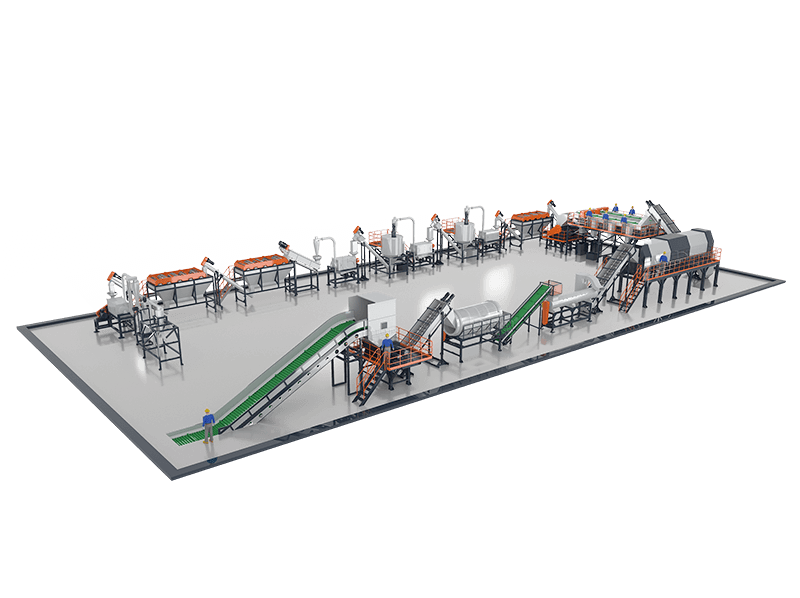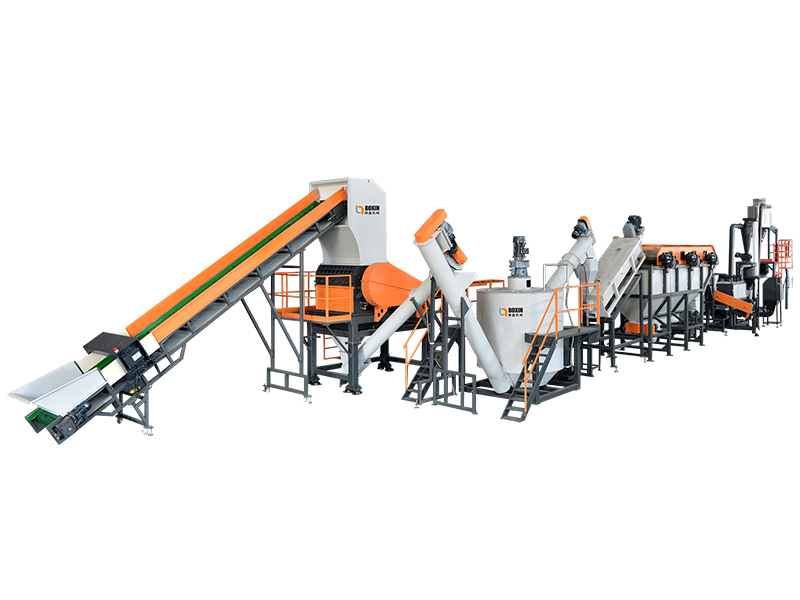This represents the highest-end application of PET recycling—reprocessing used PET bottles into new bottle-grade raw materials for manufacturing new beverage bottles or food containers.
High-quality recycled PET flakes are melted, filtered, and pelletized into food-contact-grade rPET pellets, which can then be used to blow new beverage bottles—achieving a true "bottle-to-bottle" closed-loop cycle. It's important to note that regulations vary by country regarding the direct use of recycled PET in food packaging. In regions like China, for safety reasons, recycled flakes are generally not permitted for direct use in food-grade packaging. However, in Europe and North America, high-purity, food-grade PET flakes can be certified by relevant authorities and reused in new water or beverage bottles.
Additionally, bottle-to-bottle recycling also includes non-food applications, such as packaging for cleaning agents and chemical solvents, which have lower hygiene requirements. This approach significantly reduces the reliance on virgin PET resin and is considered one of the most environmentally sustainable recycling models.
Next-generation PET bottle washing lines increasingly adopt automation technologies to reduce labor dependency and boost processing efficiency. Systems such as automated conveyors and centralized control panels have become standard. The entire production line is managed by PLCs and computer systems, enabling one-button start/stop and remote monitoring.
Leading manufacturers’ food-grade PET lines are also equipped with advanced material and color sorting machines (e.g., optical scanners powered by AI algorithms), capable of identifying and removing non-PET contaminants and colored flakes—greatly reducing the need for manual sorting.
Smart sensors enable real-time monitoring of flake impurity levels, moisture, color, etc., allowing timely adjustment of process parameters. Operational variables (temperature, flow rate, speed) are digitally managed, improving consistency and traceability.
Through automation and intelligent control, modern PET washing lines minimize human error and ensure consistent output quality.
In bottle-to-bottle recycling projects, the term most frequently mentioned is Solid State Polycondensation (SSP). The SSP process mainly addresses the reduction of intrinsic viscosity (IV) in PET flakes due to polymer chain breakage during extrusion and pelletizing.
The main reasons for IV reduction include:
Thermomechanical degradation(unavoidable)
Polymer chains break due to shear forces and abrasion during high-temperature extrusion, reducing molecular weight and causing IV to drop.
Hydrolytic degradation (avoidable)
PET is a hygroscopic material. If moisture content exceeds 100 ppm, polymer chains may break during thermal plasticization.
Effects of impurities and additives (avoidable)
Residual label adhesives, fatty substances, and impurities such as PVC and PE can trigger side reactions, further reducing IV.
Two process routes emerge in bottle-to-bottle recycling projects:
1. Blending recycled PET flakes with high-quality virgin PET pellets for extrusion and pelletizing.
2.Pelletizing with 100% recycled PET flakes.
Before deciding on a food-grade PET recycling line, clearly determine which processing scheme you will adopt.
Why can the blend of recycled flakes and virgin pellets produce bottle-grade pellets?
Based on the IV reduction reasons mentioned above, controllable measures include:
Further reducing moisture content in PET flakes through homogenization hoppers and pre-clean drying equipment to thoroughly remove water and steam.
Using food-grade PET washing lines to ensure flakes achieve low ppm impurity levels (food-grade PET washing lines have stringent quality requirements for raw materials).
Typical IV requirements for PET preforms:
Regular bottles (such as mineral water and tea beverages): IV range of 0.70–0.78.
Carbonated beverage bottles (such as Coca-Cola): recommended IV ≥ 0.78 to meet compression resistance and stress-cracking resistance.
Therefore, high-quality virgin PET pellets mixed with recycled PET flakes using parallel twin-screw extruders can fulfill downstream application quality requirements.
However, implementing bottle-grade projects is not straightforward. If adopting a recycled and virgin blend method, you must specify several critical indicators:
IV range of recycled flakes
IV range of virgin pellets
Specific IV requirements for downstream applications
Types of impurities in recycled bottles (e.g., label materials, label types such as sleeve or adhesive labels, aging bottle percentage, compressed bottle percentage, etc.)
Only by clearly providing these critical indicators can our engineering team assess the feasibility of your project. A common ratio for blending recycled flakes with virgin pellets is 3:7.
Pelletizing with 100% recycled flakes
This method involves relatively simple machinery configuration but incurs very high equipment costs. Typically, a comprehensive set of auxiliary equipment, including a complete PET washing line, pelletizing line, SSP system, homogenization hopper, and pre-crystallization drying system, is required to meet the necessary IV value.

 EN
EN 
 English
English 简体中文
简体中文 Русский
Русский España
España عرب .
عرب .







